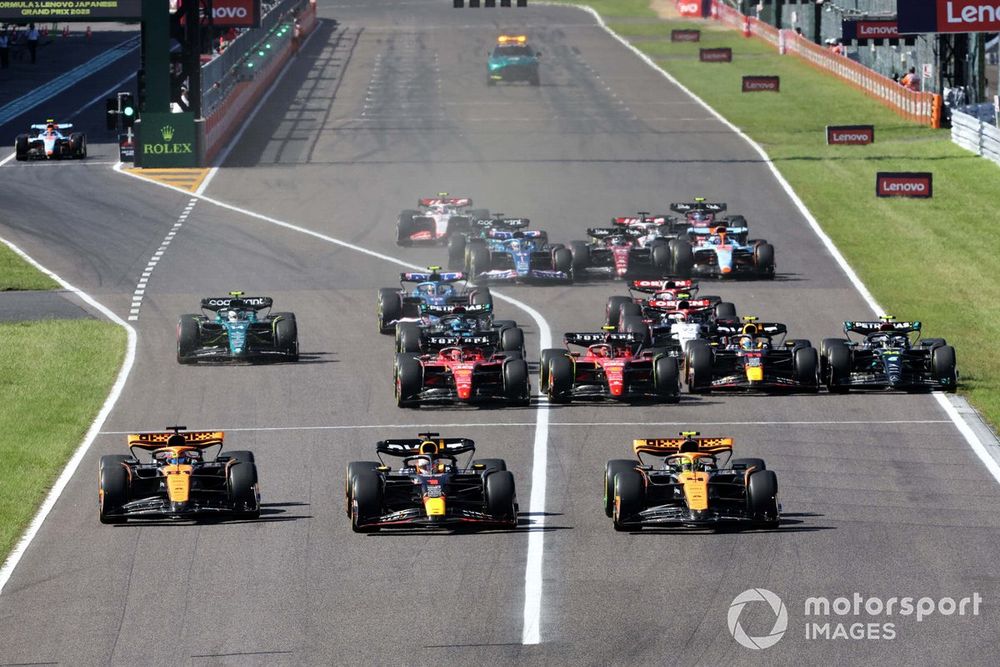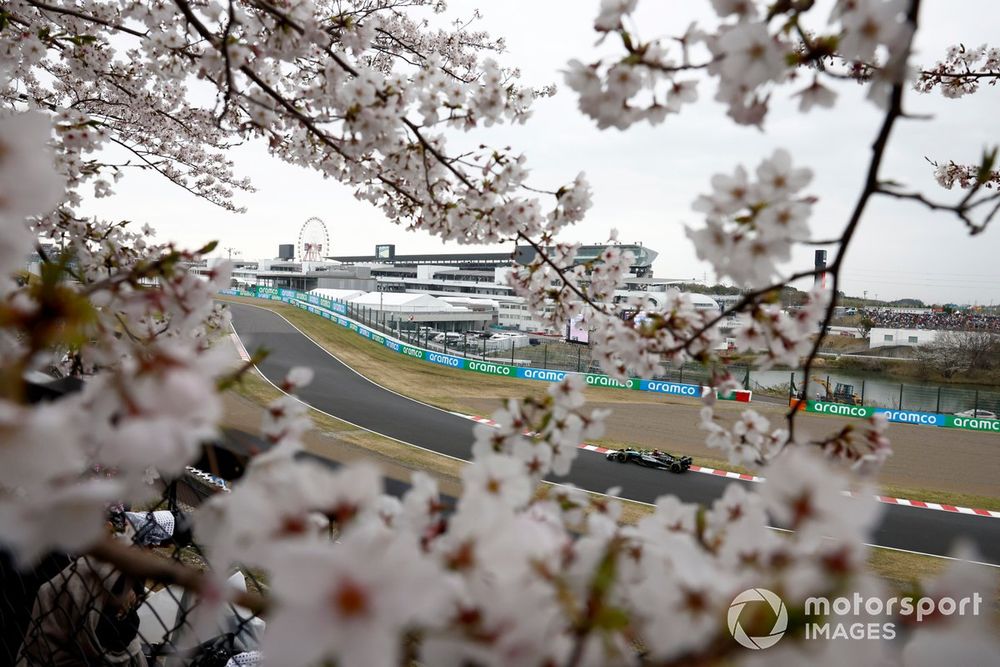But teams and drivers are already bracing themselves for what could be a game of patiently follow-the-leader thanks to the growing dirty air problem that F1 is experiencing right now.
While F1’s new ground effect rules era from 2022 was supposed to better allow cars to follow each other closely, and indeed it worked for a while, the efforts by teams over more than two years now has done away with much of the gains.
Downforce improvements made to the cars, and an increased mastery of outwash designs that are perfect for diverting airflow away from a car but lead to a disturbed wake for pursuing rivals, has made close racing much harder.
While things look super tight between Red Bull’s chasing pack which points to an potentially unpredictable contest, the high aero demands of Suzuka are going to make things super difficult for anyone to race as hard as they like if they are trapped behind another car.
It could mean that the key to making progress up the order at Suzuka is not in brilliant overtakes but in getting clean air – potentially with an out of sync pitstop – to be able to maximise pace.
Lewis Hamilton, Mercedes F1 W15
Photo by: Zak Mauger / Motorsport Images
Pirelli’s head of car racing Mario Isola reckoned that this need to quickly clear rivals and find a gap on track could be a factor in further pushing teams towards starting the race on the soft.
“There has been a lot of development with the aero package and now, unfortunately, we are back in a situation where, when you follow another car, you lose downforce,” he said. “At the beginning of 2022, this effect was not there.
“Now it is back, because the teams have all developed new aero packages and they are creating turbulence behind them.
“And, unfortunately, because of the fast and flowing nature of this track, if you follow another car and you are in traffic, you lose quite a lot of downforce.
“That’s why the soft at the beginning could be an option to try to get an advantage and not to stay in traffic, even if you have to have a shorter stint at the beginning of the race.”

Max Verstappen, Red Bull Racing RB19, leads Lando Norris and Oscar Piastri, McLaren MCL60s, at the start of the 2023 Japanese GP
Photo by: Steve Etherington / Motorsport Images
The dirty air factor means that the start will be more important than it is at some other tracks, and the leader out of Turn 1 should have a pretty good advantage over his…
Click Here to Read the Full Original Article at Motorsport.com – Formula 1 – Stories…

